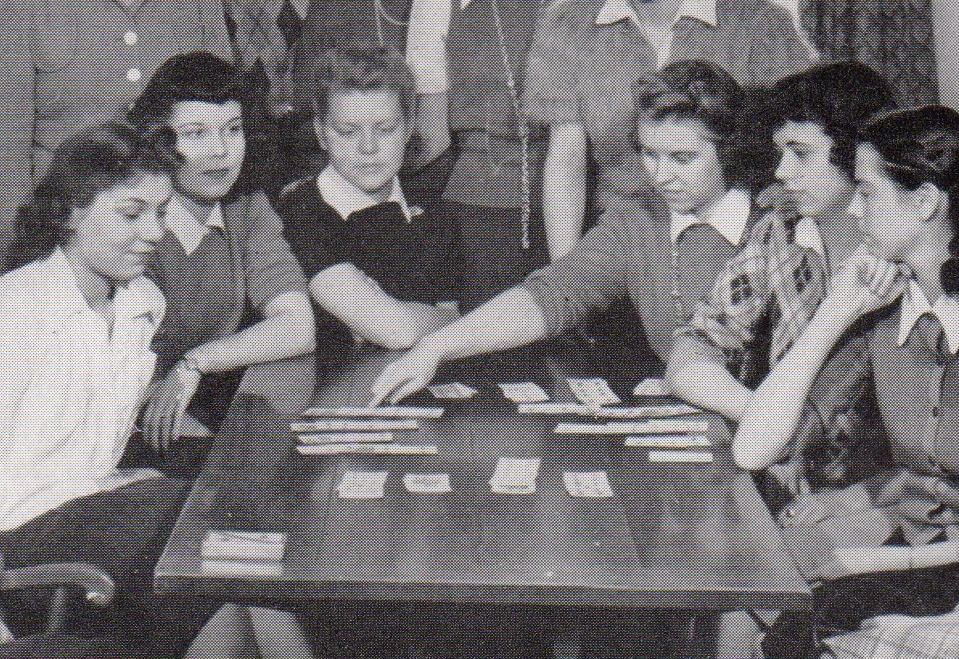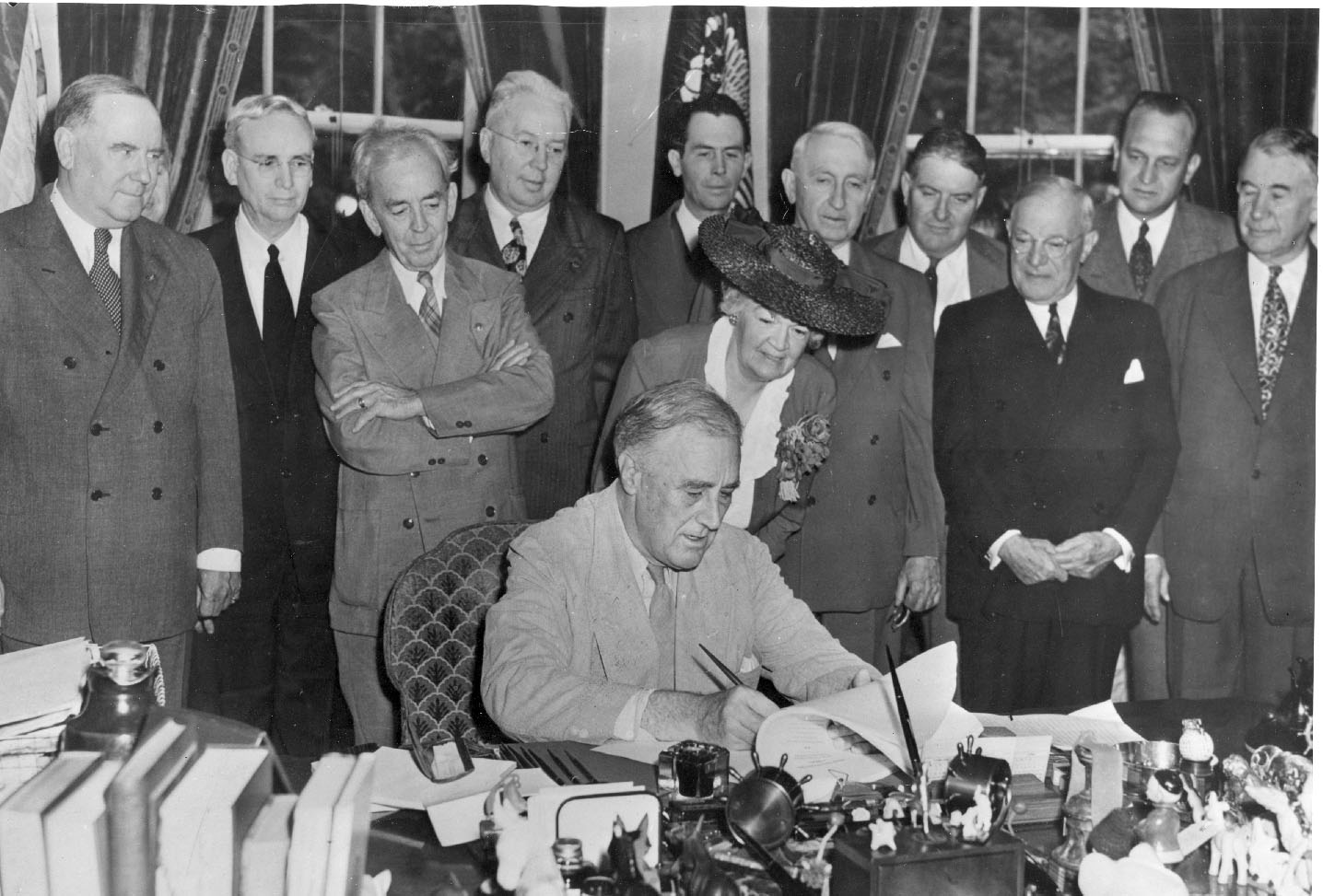|
Spades (card Game)
Spades is a trick-taking card game devised in the United States in the 1930s. It can be played as either a partnership or solo/"cutthroat" game. The object is to take the number of tricks that were bid before play of the hand began. Spades is a descendant of the whist family of card games, which also includes bridge, hearts, and oh hell. Its major difference as compared to other whist variants is that, instead of trump being decided by the highest bidder or at random, the spade suit always trumps, hence the name. History Spades was devised in the Midwest of the United States in the late 1930s. at pagat.com. Retrieved 11 September 2018. [...More Info...] [...Related Items...] OR: [Wikipedia] [Google] [Baidu] |
Trick-taking
A trick-taking game is a card game, card- or tile-based game in which play of a ''Hand (card games), hand'' centers on a series of finite rounds or units of play, called ''tricks'', which are each evaluated to determine a winner or ''taker'' of that trick. The object of such games then may be closely tied to the number of tricks taken, as in plain-trick games such as contract bridge, whist, and Spades (card game), spades, or to the value of the cards contained in taken tricks, as in point-trick games such as pinochle, the Tarot card games, tarot family, briscola, and most evasion games like Hearts (card game), hearts. Trick-and-draw games are trick-taking games in which the players can fill up their hands after each trick. In most variants, players are free to play any card into a trick in the first phase of the game, but must ''follow suit'' as soon as the stock is depleted. Trick-avoidance games like reversis or Polignac (card game), polignac are those in which the aim is to a ... [...More Info...] [...Related Items...] OR: [Wikipedia] [Google] [Baidu] |
Bridge (game)
Contract bridge, or simply bridge, is a trick-taking card game using a standard 52-card deck. In its basic format, it is played by four players in two competing partnerships, with partners sitting opposite each other around a table. Millions of people play bridge worldwide in clubs, tournaments, online and with friends at home, making it one of the world's most popular card games, particularly among seniors. The World Bridge Federation (WBF) is the governing body for international competitive bridge, with numerous other bodies governing it at the regional level. The game consists of a number of , each progressing through four phases. The cards are to the players; then the players ''call'' (or ''bid'') in an seeking to take the , specifying how many tricks the partnership receiving the contract (the declaring side) needs to take to receive points for the deal. During the auction, partners use their bids to exchange information about their hands, including overall strength ... [...More Info...] [...Related Items...] OR: [Wikipedia] [Google] [Baidu] |
Trump (card Games)
A trump is a playing card which is elevated above its usual rank in trick-taking games. Typically an entire suit is nominated as a ''trump suit''; these cards then outrank all cards of plain (non-trump) suits. In other contexts, the terms ''trump card'' or ''to trump'' refers to any sort of action, authority or policy which automatically prevails over all others. The introduction of trumps is one of only two major innovations to trick-taking games since they were invented; the other being the idea of bidding. Trump cards, initially called '' trionfi'', first appeared with the advent of Tarot cards in which there is a separate, permanent trump suit comprising a number of picture cards. The first known example of such cards was ordered by the Duke of Milan around 1420 and included 16 trumps with images of Greek and Roman gods. Around the same time that Tarot cards were invented with the purpose of adding a trump suit to the existing four suits, a similar concept arose in the g ... [...More Info...] [...Related Items...] OR: [Wikipedia] [Google] [Baidu] |
Trick-taking Game
A trick-taking game is a card- or tile-based game in which play of a ''hand'' centers on a series of finite rounds or units of play, called ''tricks'', which are each evaluated to determine a winner or ''taker'' of that trick. The object of such games then may be closely tied to the number of tricks taken, as in plain-trick games such as contract bridge, whist, and spades, or to the value of the cards contained in taken tricks, as in point-trick games such as pinochle, the tarot family, briscola, and most evasion games like hearts. Trick-and-draw games are trick-taking games in which the players can fill up their hands after each trick. In most variants, players are free to play any card into a trick in the first phase of the game, but must ''follow suit'' as soon as the stock is depleted. Trick-avoidance games like reversis or polignac are those in which the aim is to avoid taking some or all tricks. The domino game Texas 42 is an example of a trick-taking game that i ... [...More Info...] [...Related Items...] OR: [Wikipedia] [Google] [Baidu] |
Oh Hell
Oh hell or contract whist is a trick-taking card game of British origin in which the object is to take exactly the number of tricks bid. It was first described by B. C. Westall around 1930 and originally called oh! well.Parlett (1996), p. 176. It was said to have been introduced into America via the New York clubs in 1931.Parlett (1991), p. 312. Phillips and Westall describe it as "one of the best round games".Phillips & Westall (1939), pp. 222–223. Name This English game was originally called oh! well, but is often known as contract whist in Britain and, less commonly, as nomination whist, while American sources call it oh pshaw or more frequently oh hell. David Parlett gives other names: blackout, bust, elevator and jungle bridge;Parlett (2008), pp. 85–86. while John McLeod adds blob, so called because the player's predicted bid is overwritten with a black blob if not achieved. Concept The game explores the idea of taking an exact number of tricks specified by a bid ... [...More Info...] [...Related Items...] OR: [Wikipedia] [Google] [Baidu] |
Pinochle
Pinochle (), also called pinocle or penuchle, is a trick-taking ace–ten card game, typically for two to four players and played with a 48-card deck. It is derived from the card game bezique; players score points by trick-taking and also by forming combinations of characters into melds. It is thus considered part of a "trick-and-meld" category which also includes the game belote. Each hand is played in three phases: bidding, melds, and tricks. The standard game today is called "partnership auction pinochle". History Pinochle is thought to have two possible origins. One is that it is a cousin of Binokel, with both games evolving from the game of bezique. A second alternative is that pinochle actually developed from the Swiss and, later, South German game of Binocle or Binokel, which in turn is a descendant of bezique. The word pinochle has several different potential derivations. It may come from the French word ''binocle'' literally meaning "two eyes", or "eyeglasses" or ... [...More Info...] [...Related Items...] OR: [Wikipedia] [Google] [Baidu] |
500 (card Game)
500 or Five Hundred is a trick-taking game developed in the United States from Euchre.Peter Arnold, ''The Book of Card Games'', , p. 122–126 Euchre was extended to a 10 card game with bidding and a Misère contract similar to Russian Preference, producing a cutthroat three-player game like Preference and a four-player game played in partnerships like Whist which is the most popular modern form, although with special packs it can be played by up to six players. It arose in America before 1900 and was promoted by the US Playing Card Company, who copyrighted and marketed a deck with a set of rules in 1904. The US Playing Card Company released the improved Avondale scoring table to remove bidding irregularities in 1906. 500 is a social card game and was highly popular in the United States until around 1920 when first auction bridge and then contract bridge drove it from favour. It continues to be popular in Ohio and Pennsylvania, where it has been taught through six generations ... [...More Info...] [...Related Items...] OR: [Wikipedia] [Google] [Baidu] |
Contract Bridge
Contract bridge, or simply bridge, is a trick-taking game, trick-taking card game using a standard 52-card deck. In its basic format, it is played by four players in two Team game, competing partnerships, with partners sitting opposite each other around a table. Millions of people play bridge worldwide in clubs, bridge tournaments, tournaments, online and with friends at home, making it one of the world's most popular card games, particularly among Old Age, seniors. The World Bridge Federation (WBF) is the governing body for international competitive bridge, with numerous other bodies governing it at the regional level. The game consists of a number of , each progressing through four phases. The cards are to the players; then the players ''call'' (or ''bid'') in an seeking to take the , specifying how many tricks the partnership receiving the contract (the declaring side) needs to take to receive points for the deal. During the auction, partners use their bids to exchange infor ... [...More Info...] [...Related Items...] OR: [Wikipedia] [Google] [Baidu] |
Spades (card Game)
Spades is a trick-taking card game devised in the United States in the 1930s. It can be played as either a partnership or solo/"cutthroat" game. The object is to take the number of tricks that were bid before play of the hand began. Spades is a descendant of the whist family of card games, which also includes bridge, hearts, and oh hell. Its major difference as compared to other whist variants is that, instead of trump being decided by the highest bidder or at random, the spade suit always trumps, hence the name. History Spades was devised in the Midwest of the United States in the late 1930s. at pagat.com. Retrieved 11 September 2018. [...More Info...] [...Related Items...] OR: [Wikipedia] [Google] [Baidu] |
Cut (cards)
In card games, to cut the cards (also "cut the deck" or "cut the pack") is to split the deck into two packets by lifting one packet from the top and placing it face down next to the remaining cards beneath it. The lower packet is then placed on top of it. This is typically done after the cards have already been shuffled, and the procedure is used just prior to the cards being dealt to the players. The aim of this is to reduce the possibility of cheating, for example, by knowing the top or bottom card. Cutting the cards is also a common way of determining the seating order at a card table, the partnerships or the first dealer. Purpose The practice of cutting is primarily a method of reducing the likelihood of someone cheating by manipulating the order of cards to gain an advantage. Even if the dealer (or the shuffler, if they are not the dealer) does not plan on cheating, cutting will prevent suspicions, thus many rules require it. Some players also consider the cut to be luc ... [...More Info...] [...Related Items...] OR: [Wikipedia] [Google] [Baidu] |
GI Bill
The G.I. Bill, formally the Servicemen's Readjustment Act of 1944, was a law that provided a range of benefits for some of the returning World War II veterans (commonly referred to as G.I.s). The original G.I. Bill expired in 1956, but the term "G.I. Bill" is still used to refer to programs created to assist American military veterans. It was largely designed and passed through Congress in 1944 in a bipartisan effort led by the American Legion, which wanted to reward practically all wartime veterans. John H. Stelle, a former Democratic governor of Illinois, served as the Chairman of the Legion's Executive Committee, which drafted and mobilized public opinion to get the G.I. Bill to President Roosevelt's desk on June 22, 1944. Stelle was rewarded for his efforts by the Legion which unanimously elected him its National Commander in 1945. He is commonly referred to as the "Father of the G.I. Bill." Since the First World War the Legion had been in the forefront of lobbying C ... [...More Info...] [...Related Items...] OR: [Wikipedia] [Google] [Baidu] |




